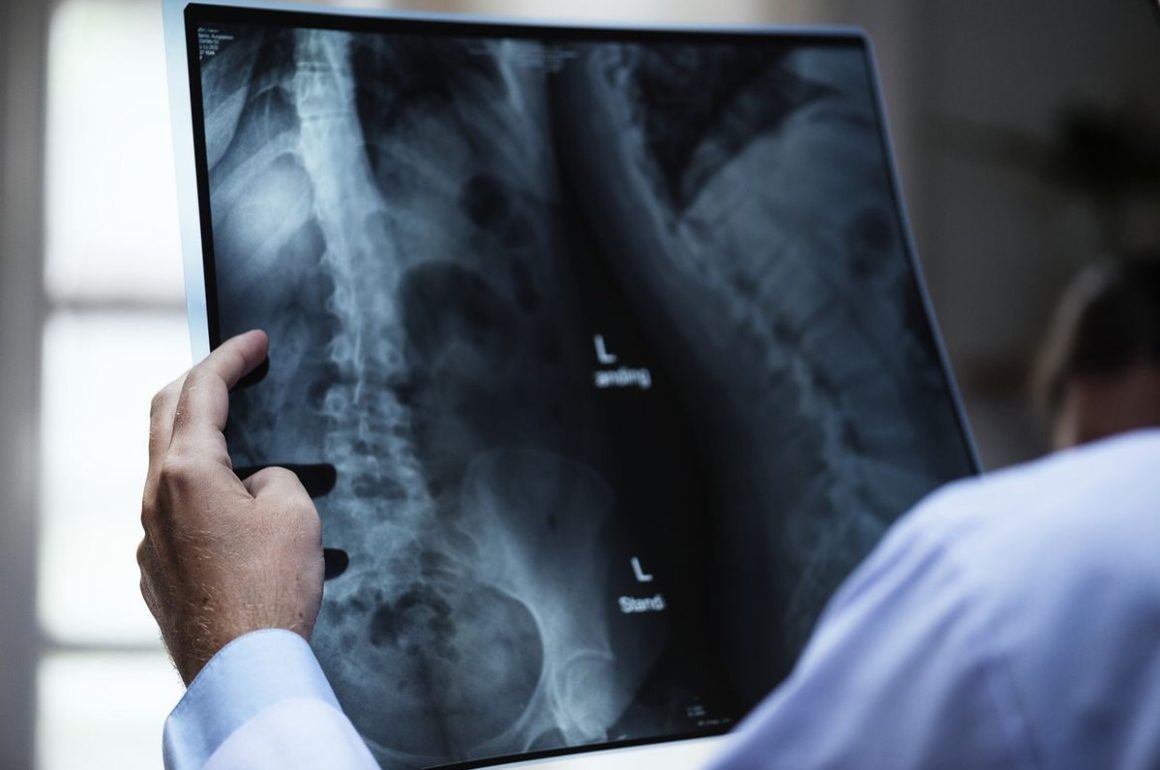In 2005, Gabriella faced surgery again. We had prepared our daughter for operations before, but not for six years. Now her scoliosis developed to where we had to act at once.
The curvature of her spine caused her increasing discomfort, so we knew this was coming. But her orthopedic surgeon, a doctor we respected, made it an easy decision. He told us if we waited any longer, he would have to do two procedures instead of one. The first would involve an entering through her back … with a second a few days later with an incision in her abdomen.
Gabriella experienced the OR ten times by her fourth birthday. In the years since her last cranial surgery, we had grown into more routine, more normalcy. But we summoned the fortitude that had lain dormant. That morning in late September, we found ourselves once more in the waiting room.
We had risen early, gotten our daughter ready, and driven to Robert Wood Johnson Hospital. As usual, Lisa got her admitted while I parked the car in the underground garage. After her doctor greeted us, we met the anesthesiologist. General anesthesia was always nerve-wracking, but we became comfortable with the surgical team. But we also knew this would be a big one.
Gabriella had already had three operations on her skull to remove a recurrent tumor, but spinal fusion was a complex procedure. The orthopedic surgeon warned it would take as long as six hours.
They let one parent escort her into the operating room. While it was daunting to deliver my child into this environment, I felt she appreciated my presence while still conscious. After they got me outfitted in scrubs and a mask of my own, I held her hand as we walked down the hall and then in the OR. Often, I whistled to keep her calm until they administered the anesthesia. But this time seemed different.
First, there was a larger team already gathered than in all of her earlier surgeries, doctors and nurses bustling about getting ready. The crowd was intimidating, but not so much as the array of tools and equipment, screws and rods and implements for cutting. I emerged from this sobering scene in a haze.
Lisa and I waited with reading material, but were unable to concentrate for long. And it was a busy waiting room, with other patients’ family members coming and going. By the time an hour passed, we thought we had been there three. Whenever the door opened, we looked up, anxious to see the surgeon still wearing his scrubs. We glanced at each other as frequently as the newspapers or books in our laps.
At last, our doctor came in. He gestured to a quiet corner. We rose and followed, fearful, and sat across from him. I gripped Lisa’s hand in mine. He said she had done well, although they had transfused a lot of blood. I donated in advance, and was relieved I had been able to do something to help.
“Can we see her?”
He nodded and led down an endless hallway to the recovery area. We passed curtained sections until we reached our daughter. She lay on a gurney in her hospital gown. Her face was so swollen, we barely recognized our own child. Despite this jarring vision, they assured us she was doing well. Until her oxygen level began to fall.
After a chest x-ray, they explained that there were post-surgical complications. Gabriella suffered a collapsed lung. They took her to Intensive Care, unconscious and with a breathing tube.
We fought off tears. She had been through so much, and she was bigger than all those earlier stays, but this seemed far worse. We held her hands and stroked her hair; we whispered that Mommy and Daddy were here now. But she didn’t respond.
Thus began a frightening stay in the ICU. Her grandparents brought Alexander to visit his sister, although we gave him limited exposure because we didn’t want him to be scared off by her appearance. As night approached, we considered our options.
During all of her prior hospitalizations, we had traded off. Lisa stayed the first night, while I went home to sleep, then after a quick shower in the morning I returned. Then we’d switch places for the next overnight. But this was different, and the nursing staff in Intensive Care allowed us both to stay.
These nurses and aides were phenomenal during Gabriella’s stay, and the orthopedic surgeon was gentle and compassionate. Throughout it all, we always felt like she was in good hands.
Our daughter was out cold for two full days while intubated. After they removed the breathing tube, it took another day for her to come out of it.
Because of the congestion in her lungs, they needed to do regular chest PT. This involved striking a cupped hand or a plastic cup like a mask against her back and front and side. Gabriella never liked this, often showing us the pout she made when her feelings were hurt. Now it became heartbreaking to watch, since they did chest PT through her heavy bandages.
As she recovered, family and friends came to visit. One friend was the mom of a fellow student of Gabriella’s at school. She had shared the difficulties of her own daughter’s scoliosis surgery and we appreciated her reassurances.
After five days in Intensive Care, she moved to a hospital room. The swelling on her face receded. Another forty-eight hours, and we brought her home. She arrived to find a tangle of balloons and flowers, and a Build-a-Bear from her friends at Lakeview.
It was then that her recovery accelerated. Within another week, we put the terrifying ordeal of her worst-ever surgery behind all of us. We welcomed the return of our routines, with just a bit more appreciation for our own unique version of “normal”.






